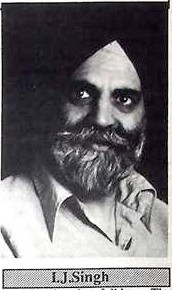
Insofar as religions deal with historical events people and places they are amenable to historical analyses. But religions also deal with a reality not clearly dissembles to the outsider.
Our senses cannot perceive our intellect cannot fathom yet our souls can commune with this reality which transcends the intellect.
This essential essence of religion remains unfortunately hidden to the uninitiated. Yet the intellectual historical analysis enhances our understanding of a religion. For this reason alone McLeod deserves our gratitude. The book is one of a series on Sikhism that have flowed from the fertile pen of McLeod. He applies historical analysis to the young vibrant practical but complex religion of the Sikhs. His writing refreshing in its brevity and lucidity and free of the conceptual cobwebs and convoluted verbosity that often defines religious writing. Yet for many reasons McLeod has generated controversy and debate but lite appreciation from the Sikhs At times he seem to have shed more heat than light on Sikh history. At issue are interpretations of many historical events. The early history of the Sikhs is a web so tangled that it is not easy to trace any strand unambiguously to its origin Also perusal of its early sources requires a mastery of many complex languages. This imposes barter to most scholars. McLeod seems to have embraced some question able if not erroneous Concepts. Most of these substantive matters have been dealt with by historians and scholars of Sikhism and would require a critique the same size as the book. A couple of examples would suffice here. Guru Hargobind wore two swords representing the temporal and the spiritual realms. McLeod opines that this was due to the influx of jats within the new religion and a departure from the teachings of Guru Nanak. He soft-pedals or fails to grasp that 1) the temporal and spiritual realms were integrated much earlier by Guru Nanak and 2) Sikhism as-a dynamic system continued to evolve from Nanak to Gobind Singh though many of the teachings were codified only in the twentieth century. An evolving clearer understanding of the visions of the Guns from Nanak to Gobind Singh does not mean a later-day tampering with their teaching but is a natural reflection of the growth and maturity of the Sikhs, Similarly, the fact that certain un-Sikh, Hindu practice, such as the caste system exist in some Sikhs even today does not indicate any ambiguity in the teaching of the Gurus but only in the follower and when such practices are eradicated it should not suggest that the Sikhs have altered the Gurus teachings. Similar themes can be found in the close relationship of many religions such as Christianity and Judaism particularly in the early period. In another context whether at the time of the Gurus of now some followers were unsure whether they were Hindus or Sikhs but that is not reason to formulate a new creed of Sikhs as McLeod suggests. This is fallacious and abysmal reasoning. The definition of a Sikh has to derive from what the community codifies and adopts as consistent with its spiritual heritage and historical condition and not from some obscure document of questionable authenticity or interpretation. This is reminiscent of the fact that Jews for Jesus” have existed for 2000 years but their presence doesn’t diminish when differences between the two great religions. Surly McLeod knows that in the more than 250 denominations of Christianity and several sects of Judaism many label the others as heretical. McLeod rightly points out groups at the periphery out groups at the periphery of Sikh belief.
McLeod needs to see Sikhism as unusual since the era of its founders spanned over 200 years from Guru Nanak to Guru Gobind Singh. One needs to focus on the unity of thought that pervades the Gurus not the superficial differences. Also the Guns Granth of the Sikhs was collated by the Gurus themselves and not by their followers years or centuries later. Since the authenticity of the holy book is not in doubt answers to many of the questions of history or faith can be found within that book.
Religions need to be viewed through the double lenses of faith and history. The single lens of history is inadequate while that of faith alone often clouds the judgments. As a non-Sikh McLeod has only the historical lens available yet in trying to peer past faith the depths of Sikh faith have touched him.
This book based on lectures prepared for Oxford University is important not for any answers that it provides but for its broad reach into Sikh history and for delving in to uncharted territory. McLeods work marks a major systematic effort at an analysis of the evolution of Sikh identity from Nanak to the twentieth century based on authentic historical documents and source Other than book carries a useful bibliography. It raises significant issues such as the role in religion of elected bodies legislated by government as well as the place of many sects on the fringes of Sikh belief. The debate it has generated within the Sikh community should spur further research. How others view us and how we see ourselves are both important to knowing what we are. McLeods work deserves to be read and critically appraised even though there are significant gaps in the story.
By: I.J. Sing,
New York University
January 11 1992
Article extracted from this publication >> February 21, 1992